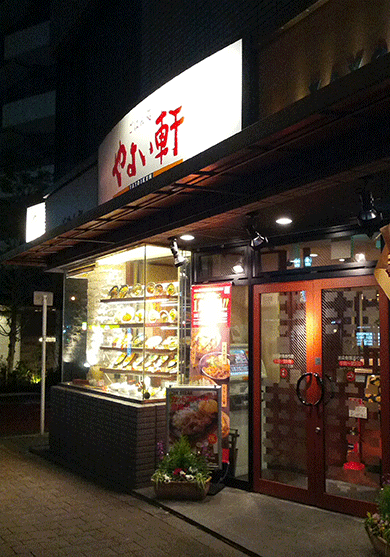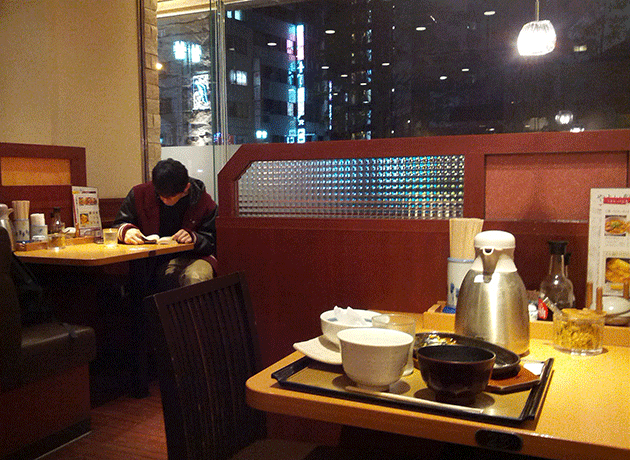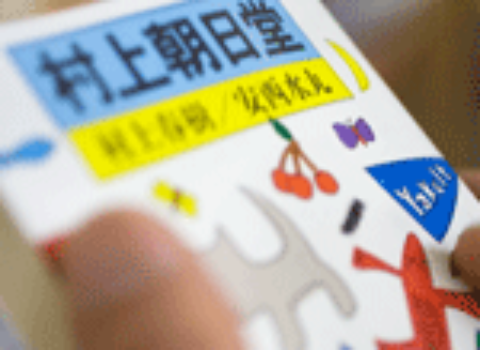This spring, at a time when American fast-food workers were marching to demand pay increases, and local governments were voting to raise the minimum wage, the Chili’s restaurant chain installed more than 45,000 tabletop touchscreen devices at 823 of its franchises nationwide. Customers at these locations can now order drinks and dessert directly through monitors, pay without the assistance of a server, play games, and read the digital edition of USA Today. The company has also installed computerized ovens at 1,200 locations. Applebee’s, meanwhile, has announced plans to follow suit with approximately 100,000 tabletop tablets by the end of 2014, while Panera Bread is replacing many registers with self-serve kiosks and adding technology that will allow customers to sit down, enter their orders and table numbers on a smartphone, and have their food delivered to them.
For consumers, such automation is convenient. For restaurant workers, it raises fears of displacement. Some analysts believe fast-food chains will respond to the push for higher wages by simply replacing servers and cooks with robots — some of which are already arriving: MIT’s Makr Shakr is capable of mixing cocktails ordered through mobile devices, while the Chinese-made NoodleBot cuts fresh noodles at a fraction of the usual cost. And a hamburger maker marketed by Momentum Machines can grind meat, cook patties, slice tomatoes, and assemble and bag approximately 360 burgers per hour. Restaurants around the world are exploring new ways to implement these new technologies. Since 2008, customers at Bagger’s, in Nuremberg, Germany, for example, have been ordering from touch screens, then waiting for the cook to deliver their food by sliding a container down a set of winding metal tracks, in a theatrical touch.
Japanese restaurants embrace a more pragmatic form of mechanization. At the thriving donburi chain Matsuya, customers order and pay for meals at self-serve machines known alternately as shokkenki or kenbaiki (both of which translate to “ticket machine”). So too at the home-style restaurant chain Yayoiken and at the countless independent curry, ramen, takoyaki, and udon restaurants that fill Japan’s bustling train stations and side streets. For these businesses and their customers, shokkenki are a benign convenience, so integrated into daily life that locals barely notice them.
I, on the other hand, was rapt. This past winter, I spent three weeks in Japan. Jet-lagged and red-eyed on my first night in Tokyo, I was so hungry that when a cab dropped me off on Kita-dori, I’d just rolled my luggage past my hotel and gone in search for food. I eventually found a building with a menu hanging from a door. The lights around me flashed as though I was emerging from anesthesia. Nothing made sense: not the surrounding maze of streets, nor the language on the menu. I’d been awake for a full day and traveling nearly as long.
After studying the menu for a while, I peered into the window. Solitary men sat at a U-shaped counter, shoveling meat and rice into their mouths. Nobody talked, but the interior looked inviting, like a 1940s New York City diner in bright orange and yellow. The seeming isolation appealed to me — the less I was forced to speak, the more time I would have to acclimate and absorb my new surroundings.
Through the front window, I watched a man go through the ordering process. The system appeared simple enough: he scanned one of the menus hanging on the entrance doors, entered, approached a machine, inserted coins, and ordered by pushing a button labeled with a photo of his chosen meal. When he sat down, an employee took his ticket, set a cup of tea in front of him, and started cooking his food.
I’d heard of this system years before my visit and had thought it sounded dystopian. But I ended up enjoying my meal so much that I ate at shokkenki restaurants often. I saw them as a distinctive mix of working-class luxury, respectful indifference, and all-hours accessibility, and I appreciated the chance they afforded me to observe a cross-section of regular people: salarymen and salarywomen, blue-haired club kids, construction workers, pods of teenage girls. The restaurants seemed like a great equalizing commons, humane in a way that their mechanized underpinnings seemed to contradict.
I work in a tea shop for a living, which makes it hard for me to reconcile my perceptions of the social aspects of shokkenki restaurants with the antisocial implications of the automation taking place stateside. For one, automation creates the potential for widespread job losses among already low-income workers. And technology in general, while it has made socializing easier in many ways, already dominates the way we spend our time. Americans spend an average of five hours a day consuming digital media, versus about an hour socializing. By seeking to eliminate the interactions between hospitality workers and customers, does automation threaten to isolate us further?
The first automated restaurants in the United States predated the computer age. In 1888, two enterprising Philadelphia businessmen, Joseph Horn and Frank Hardart opened a successful lunchroom and baking company called Horn & Hardart. A decade later, a salesman contacted the pair and offered to sell them a vending machine designed by his employer, a German engineer and businessman named Max Sielaff. The machines were rising in popularity in Europe, but the salesman was struggling to sell American entrepreneurs on the idea that they would benefit urban customers who were immersed in the era’s faster pace of life. He’d heard, though, that the two men in Philadelphia were innovators, and it probably didn’t hurt that Hardart was German-born.
The salesman showed Horn and Hardart drawings of the prototype for a large, ornate, coin-operated vending machine that dispensed drinks and food prepared by staff hidden behind or in a basement. Intrigued, Hardart traveled to Berlin in 1900 and visited one of the “waiterless” or “automatic” restaurants that had begun operating in the city.1 He was impressed enough that he bought one of the machines.2 Then he had it placed on a steamship, which promptly sank. The replacement, whose cost was footed by an insurance company, arrived safely in 1902, and America’s first automat opened in Philadelphia that same year. It proved popular, and soon began to spread.
1 They later spread to Frankfurt, Leipzeig, Hannover, Brussels, Copenhagen, Stockholm and London, bearing names like Kaiser Automat, Cuisine L’Électricité, and Eleklrisch Restaurant Automalisch.
2 Historians disagree about whether Horn and Hardart ultimately bought their first machines from Sielaff or a German company called Quisisana.
Horn & Hardart’s low prices and welcoming atmosphere helped the chain thrive through the Great Depression and World War II. By 1941, the company had machines in 157 restaurants and shops across the country, and at its zenith in the mid-1950s, it was serving more than 750,000 people a day across 180 outlets, making it the world’s largest restaurant chain. The corporation grossed $71 million dollars in 1953.
Rather than seeing the vending machines as threats, American workers seemed to view H&H as a source of jobs. Wages were low and paid holidays scarce, but it was easy to get hired and hard to get fired, and benefits were abundant, from free food during the Depression to free group life insurance, a small pension plan, and the occasional opportunity to tap Joe Horn’s personal fund, from which he gave staff interest-free loans to pay overdue bills and hospital costs. Until the 1960s, institutional racism kept employees of color in back and out of sight, but immigrants were regularly hired, often despite limited English language skills and sometimes within days of arriving in the United States. The company also had a benevolent policy that allowed anyone of any means, including homeless people, to stay inside their restaurants as long as they wanted — an approach a company president summarized as, “Come on in, have a glass of water and a toothpick and stay a while.”
The trends that led to Horn & Hardart’s decline were already in motion in the postwar era, though: migration from cities to suburbs, rising labor and food costs, and competition from frozen dinners and fast-food outlets. As the company began shutting down its restaurants, some locations became McDonald’s, Burger Kings, and Arby’s. The company’s last Automat closed in Manhattan in 1991.
The word “automat” derives from the Greek “automatos,” meaning “self-acting,” but of course Horn & Hardart’s system was never truly automatic. Behind the machines was a hidden hive of stations buzzing with employees who prepped, cooked, stocked, and cleaned. In a sense, fast food inverted the automat model, applying mechanization to the back end — fryers and prepared ingredients, heat lamps and computerized grills, microwaves and heated storage trays — and emphasizing service and human interaction at the front. The recent moves toward mechanization by American chains have suggested to some that businesses want to limit the human interaction — and the labor expense — at both ends.
The new Chili’s and Applebee’s systems do reduce staff interactions, but the companies haven’t replaced people with robots yet. “In no way are we looking at this as a replacement for servers,” an executive at Chili’s parent company, Brinker International, told Forbes. Panera’s chief executive, Ron Shaich, has assured the press that his company isn’t trying to reduce staff, either.
In Japan, where restaurant mechanization has been constant for decades, something in the culture or the economy has ensured that human interaction remains prominent. At Matsuya, shokkenki have freed staff from having to push register keys, make change, chit-chat, and stand idly by while customers decide what to order. But whenever I entered one, people were still on hand to cook, deliver, and clean. The machines seemed to me like a supplement to human service, a way to remove one task from the chain of production and lower costs, rather than a step toward eliminating everyone.
The corporate rhetoric, at least, is that tabletop devices and self-serve kiosks will function the same way in the United States. We already use ATMs instead of bank tellers, place takeout orders by phone, check ourselves out at some grocery stores, and check ourselves in at the airport. We require technicians and programmers to keep the machines running, as well as staff to stand nearby and tell us to place our groceries back down on the scanner before placing them in the bag. The ideal, in this telling, is that technology and automation give us more time for human interactions with our friends and family. The reality, of course, is that they often just give us more time with our other tech.
I felt in Japan as though I saw the ideal at work. That first night at Matsuya, I stood outside the door, considering my options among images of what looked like stewed beef, eggs, and sausages. I pressed a button to enter the restaurant, stepped up to the ticket machine, fed coins into a slot, and scanned the panel of buttons on the shokkenki for my item. When I found the tiny image corresponding to beef gyudon, I selected it and my coins came spilling out the bottom. I turned around, afraid my bumbling was holding up the line, to find a man in a white collared shirt, his chin dark with stubble and his eyes warm. “Sorry,” I said. “I messed up. Gomenasai.”
He nodded. “Can I help?” He took the coins from the tray, placed them in the slot, and pressed the gyudon button. This time a small ticket emerged. I’d hit the “return coin” button, thinking that it would confirm my order.
I thanked the man and sat down. We ended up speaking for twenty minutes. His name was Koki, and he worked as a beverage manager at a nearby Hilton. When I told him where I was from, he smiled. “Oh, Oregon. Your first time in Japan?” It was, and despite my disorientation, I was enormously excited to be there. “You like Matsuya?” Until that moment, I hadn’t known its name.
“I do now,” I said.
He asked what else I liked to eat and suggested places for me to visit. Then we shook hands and parted ways. I didn’t see Koki again, but I think often about how he confounded my expectation. I’d believed when I arrived that automation would give me the distance I needed to acculturate, and was reminded instead that other people help us do that best.






